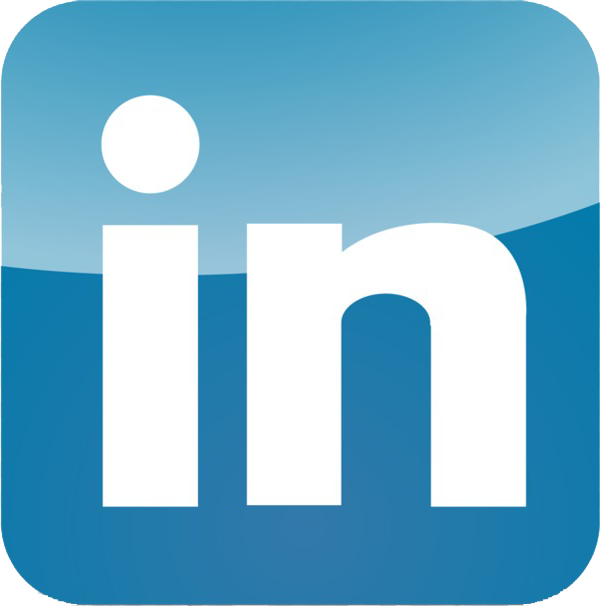Talent recruitment
人才招聘
The current situation and development trend of the electronic chemicals market for integrated circuits in 2020
Source:
|
Author:hkw5f7847
|
Published time: 2020-07-25
|
2089 Views
|
Share:
Electronic chemicals are one of the important supporting materials in the electronics industry. Their quality not only directly affects the quality of electronic products, but also has a significant impact on the industrialization of microelectronics manufacturing technology. The development of the IC industry requires the electronic chemical industry to keep pace with it. Therefore, electronic chemicals have become one of the key materials that countries in the world give priority to developing for the development of the electronic industry. Integrated circuits (IC) mainly include three major areas: IC design, IC manufacturing, and IC packaging, while electronic chemicals are mainly used in integrated circuit manufacturing, packaging and testing. Integrated circuit production needs to use a variety of electronic chemicals including silicon substrates, CMP polishing materials, high-purity reagents (for development, cleaning, stripping, and etching), special gases, photoresists, masks, packaging materials and so on.
Electronic chemicals are one of the important supporting materials in the electronics industry. Their quality not only directly affects the quality of electronic products, but also has a significant impact on the industrialization of microelectronics manufacturing technology. The development of the IC industry requires the electronic chemical industry to keep pace with it. Therefore, electronic chemicals have become one of the key materials that countries in the world give priority to developing for the development of the electronic industry.
Positioning of electronic chemicals in centralized circuits---core semiconductor materials
Integrated circuits (IC) mainly include three major areas: IC design, IC manufacturing, and IC packaging, while electronic chemicals are mainly used in integrated circuit manufacturing, packaging and testing. Integrated circuit production needs to use a variety of electronic chemicals including silicon substrates, CMP polishing materials, high-purity reagents (for development, cleaning, stripping, and etching), special gases, photoresists, masks, packaging materials and so on.
Positioning of electronic chemicals in centralized circuits---core semiconductor materials
Integrated circuits (IC) mainly include three major areas: IC design, IC manufacturing, and IC packaging, while electronic chemicals are mainly used in integrated circuit manufacturing, packaging and testing. Integrated circuit production needs to use a variety of electronic chemicals including silicon substrates, CMP polishing materials, high-purity reagents (for development, cleaning, stripping, and etching), special gases, photoresists, masks, packaging materials and so on.
According to foreign statistical classification, electronic chemicals are generally divided into substrates, photoresists (called photoresists in China), protective gases, special gases, solvents, acid-base corrosives, electronic special adhesives, auxiliary materials, etc. according to their use. It can also be summarized as: chemicals for integrated circuits, chemicals for printed circuit boards, liquid crystals and conductive compounds, and other electronic and electrical auxiliary materials.
In China, electronic chemicals are generally divided into silicon wafer photoresist, electronic special gases, electronic packaging materials, high-purity reagents, and other electronic chemicals according to their uses.
In China, electronic chemicals are generally divided into silicon wafer photoresist, electronic special gases, electronic packaging materials, high-purity reagents, and other electronic chemicals according to their uses.
Global market size-mainly concentrated in Taiwan, South Korea and Japan
Electronic chemicals are mainly used in the field of chip manufacturing and packaging and testing. According to the latest semiconductor materials market report of the International Semiconductor Industry Association SEMI on April 1, 2020, the global semiconductor materials market revenue in 2019 was US$52.1 billion, of which global wafer manufacturing Materials dropped from US$33 billion to US$32.8 billion, a slight decrease of 0.4%. Sales of wafer manufacturing materials, process chemicals, sputtering targets and CMP decreased by 2% compared with 2018; packaging materials revenue fell by 2.3% in 2019 %, from 19.7 billion US dollars to 19.2 billion US dollars, of which encapsulation materials accounted for 13%.
The main products of electronic chemicals for integrated circuits include silicon wafers, photoresist, photoresist auxiliary materials, targets, process chemicals, electronic special gas, CMP polishing materials, encapsulation materials and others. Based on the above information, forward-looking initially estimates that the global sales of electronic chemicals for integrated circuits in 2019 will be about 35.3 billion US dollars.
Electronic chemicals are mainly used in the field of chip manufacturing and packaging and testing. According to the latest semiconductor materials market report of the International Semiconductor Industry Association SEMI on April 1, 2020, the global semiconductor materials market revenue in 2019 was US$52.1 billion, of which global wafer manufacturing Materials dropped from US$33 billion to US$32.8 billion, a slight decrease of 0.4%. Sales of wafer manufacturing materials, process chemicals, sputtering targets and CMP decreased by 2% compared with 2018; packaging materials revenue fell by 2.3% in 2019 %, from 19.7 billion US dollars to 19.2 billion US dollars, of which encapsulation materials accounted for 13%.
The main products of electronic chemicals for integrated circuits include silicon wafers, photoresist, photoresist auxiliary materials, targets, process chemicals, electronic special gas, CMP polishing materials, encapsulation materials and others. Based on the above information, forward-looking initially estimates that the global sales of electronic chemicals for integrated circuits in 2019 will be about 35.3 billion US dollars.
In 2000, about three-quarters of the global electronic chemicals market was concentrated in the United States, Western Europe and Japan. As other Asian countries become production areas, this dominance has declined rapidly, thanks to the continuous growth of the global consumer electronics market and the continuous growth of the consumer electronics production industry. Asia, as well as the strategic shifts of integrated equipment manufacturers in the United States, Europe, and Japan, have turned to asset-light or fabless strategies and outsourced production to foundries in Taiwan, South Korea, China, and Singapore.
In 2019, the largest consumption area of integrated circuit process chemicals is Taiwan, China (about 22% of the total), followed by South Korea (17%), Japan (15%), China (17%), North America (12%) , Europe (7%).
In 2019, the largest consumption area of integrated circuit process chemicals is Taiwan, China (about 22% of the total), followed by South Korea (17%), Japan (15%), China (17%), North America (12%) , Europe (7%).
The rise of the Chinese market---special electronic gases and ultra-clean high-purity reagents
From 2014 to 2018, China's electronic chemicals market for integrated circuits grew steadily. In 2018, the market for electronic chemicals for integrated circuits was 18.2 billion yuan, a year-on-year increase of 17.2%. In 2019, according to the proportion of the regional scale and the overall market situation announced by SEMI, the forward-looking preliminary estimate of the market size of electronic chemicals for integrated circuits in China is about 41.2 billion yuan.
From 2014 to 2018, China's electronic chemicals market for integrated circuits grew steadily. In 2018, the market for electronic chemicals for integrated circuits was 18.2 billion yuan, a year-on-year increase of 17.2%. In 2019, according to the proportion of the regional scale and the overall market situation announced by SEMI, the forward-looking preliminary estimate of the market size of electronic chemicals for integrated circuits in China is about 41.2 billion yuan.
From the current product structure of the electronic chemicals industry for integrated circuits, it is obvious that silicon wafers account for the largest proportion of scale, accounting for 36%; followed by special electronic gases, accounting for 17%. The market for silicon wafer and packaging materials industries has become saturated. In the future, special electronic gases and ultra-clean high-purity reagents for chips will become new kinetic energy for electronic chemicals for integrated circuits.
According to data released by the China Semiconductor Industry Association, the market size of the electronic special gas industry has been showing a rapid growth trend from 2010 to 2018. In 2018, it has reached 12.156 billion yuan, an increase of 16.1% over 2017. The main reason for the growth in these years: the rapid development of the downstream semiconductor industry. Based on the industry’s average compound growth rate of 15% in recent years, it is preliminary estimated that my country’s special electronic gas market will reach 15.2 billion yuan in 2019.
In terms of regional distribution, domestic high-purity reagent companies are mainly concentrated in the Yangtze River Delta and the Pearl River Delta. Especially in Jiangyin (main companies include Jianghua Micro, Jiangyin Runma, Jiangyin Chemical Reagent Factory) and Suzhou (main companies include Jingrui), the production and sales of high-purity reagents account for 45 percent of the country’s total production and sales. % And about 28%. The leading company Jianghua Micro's main product ultra-clean and high-purity reagents achieved sales revenue of 286 million yuan, an increase of 19.28% from 2018; Jingrui's main product ultra-clean and high-purity reagents achieved sales revenue of 179 million yuan, a decrease of 20.61 from 2018. %. In summary, the leading enterprises Jianghua Micro and Wafer Co., Ltd. together accounted for more than 65% of the sales revenue of the high-purity reagent market.
The major manufacturers of ultra-clean and high-purity reagents in China in the world include BASF of Germany, Ashland Chemicals and Arch Chemicals of the United States, Kanto Chemicals, Mitsubishi Chemicals, Kyoto Chemicals, Sumitomo Chemicals, Taiwan Lianshi, Xinlin Technology, South Korea Toyo Fine Chemicals, etc. The localization rate of ultra-clean and high-purity reagents in the market is only about 25%.
In terms of regional distribution, domestic high-purity reagent companies are mainly concentrated in the Yangtze River Delta and the Pearl River Delta. Especially in Jiangyin (main companies include Jianghua Micro, Jiangyin Runma, Jiangyin Chemical Reagent Factory) and Suzhou (main companies include Jingrui), the production and sales of high-purity reagents account for 45 percent of the country’s total production and sales. % And about 28%. The leading company Jianghua Micro's main product ultra-clean and high-purity reagents achieved sales revenue of 286 million yuan, an increase of 19.28% from 2018; Jingrui's main product ultra-clean and high-purity reagents achieved sales revenue of 179 million yuan, a decrease of 20.61 from 2018. %. In summary, the leading enterprises Jianghua Micro and Wafer Co., Ltd. together accounted for more than 65% of the sales revenue of the high-purity reagent market.
The major manufacturers of ultra-clean and high-purity reagents in China in the world include BASF of Germany, Ashland Chemicals and Arch Chemicals of the United States, Kanto Chemicals, Mitsubishi Chemicals, Kyoto Chemicals, Sumitomo Chemicals, Taiwan Lianshi, Xinlin Technology, South Korea Toyo Fine Chemicals, etc. The localization rate of ultra-clean and high-purity reagents in the market is only about 25%.
Mobile official website

© Copyright Zhejiang Hengtong Chemical Co., Ltd. All rights reserved Technical Support:辰星科技




